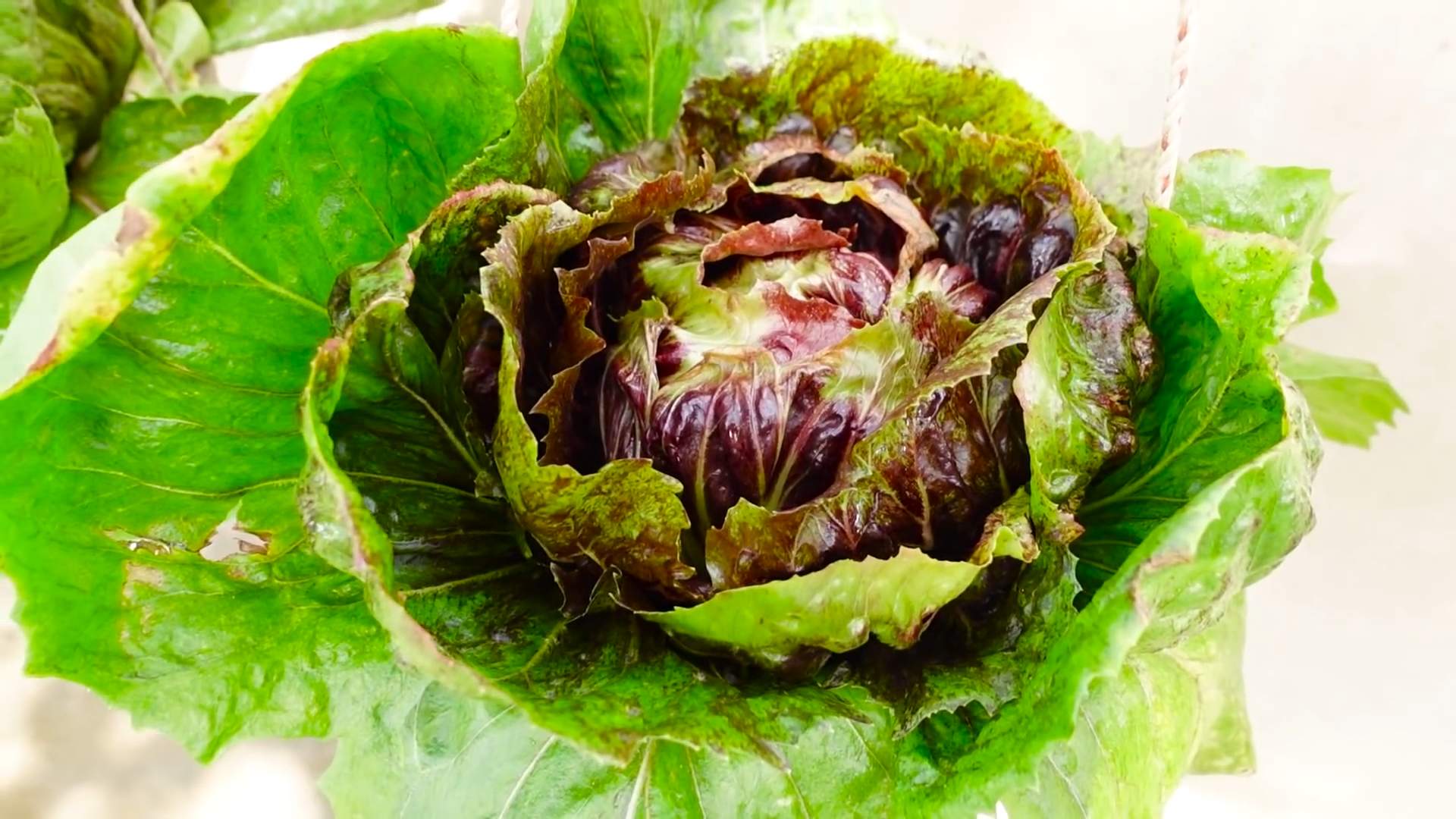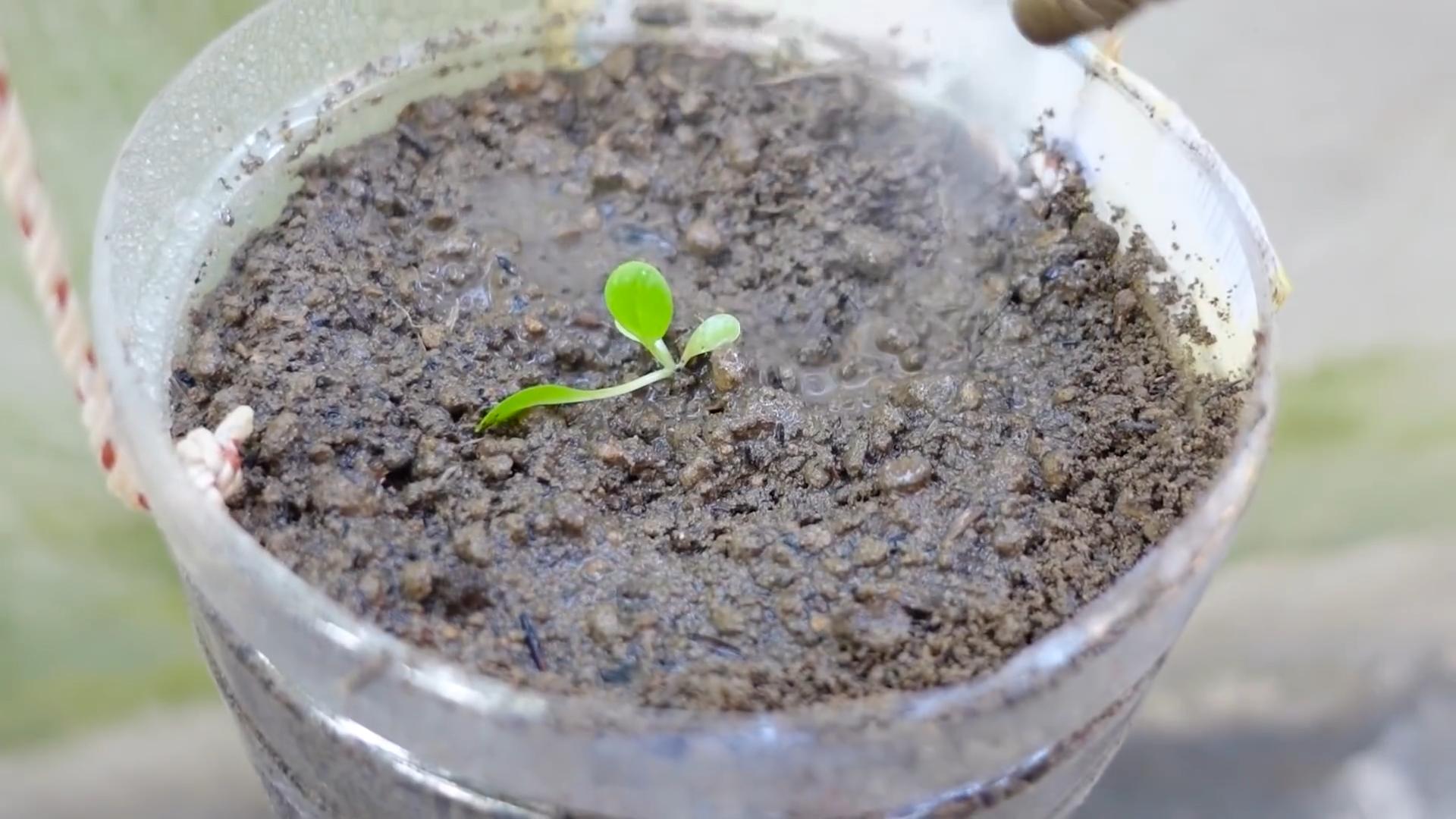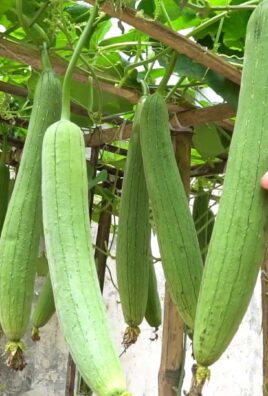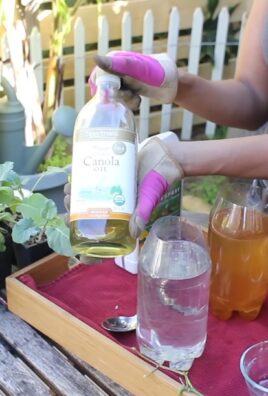Grow vegetables for beginners? Absolutely! Imagine stepping into your backyard and harvesting fresh, juicy tomatoes, crisp lettuce, and fragrant herbs, all grown with your own two hands. It’s not just a dream; it’s an achievable reality, even if you’ve never touched a trowel before. For centuries, cultivating our own food has been a cornerstone of human civilization, connecting us to the earth and providing sustenance. From ancient Roman kitchen gardens to the victory gardens of World War II, growing vegetables has always been a symbol of self-sufficiency and resilience.
But let’s be honest, the thought of starting a vegetable garden can be daunting. Where do you even begin? That’s where this DIY guide comes in! I’m here to share some simple, effective tricks and hacks that will empower you to grow vegetables for beginners successfully, even if you have limited space, time, or experience. We’ll break down the process into manageable steps, covering everything from choosing the right location and soil to selecting easy-to-grow vegetables and troubleshooting common problems.
In today’s world, where we’re increasingly conscious of what we eat and where it comes from, growing your own vegetables is more relevant than ever. Not only will you enjoy the unparalleled taste of homegrown produce, but you’ll also reduce your carbon footprint, save money, and gain a rewarding new hobby. So, grab your gardening gloves, and let’s get started on this exciting journey together!

Growing Your Own Veggies: A Beginner’s Guide to a Bountiful Harvest
Okay, so you’re thinking about growing your own vegetables? Awesome! It’s seriously rewarding to pluck a fresh tomato or crisp lettuce leaf straight from your garden and know you grew it yourself. Don’t be intimidated – it’s totally doable, even if you’ve never gardened before. This guide will walk you through everything you need to know to get started.
Choosing Your Veggies: What to Grow?
Before you even think about digging, you need to decide what you want to grow. Here’s what I recommend considering:
* Your Climate: This is HUGE. Some veggies thrive in warm weather, others prefer cooler temperatures. Find out your USDA plant hardiness zone (you can easily Google it) and choose veggies that are well-suited to your area.
* Your Space: Do you have a sprawling backyard or just a sunny balcony? If you’re short on space, consider container gardening. Bush beans, peppers, tomatoes, and herbs do really well in pots.
* Your Taste: Grow what you actually like to eat! There’s no point in growing a ton of kale if you’re not a fan.
* Your Skill Level: Some veggies are easier to grow than others. For beginners, I suggest starting with:
* Lettuce
* Radishes
* Bush beans
* Zucchini
* Tomatoes (especially cherry tomatoes)
* Peppers
* Herbs (basil, mint, chives)
Preparing Your Garden Bed (or Containers!)
Now that you know what you want to grow, let’s get your garden ready.
* Location, Location, Location: Most vegetables need at least 6-8 hours of sunlight per day. Choose a spot that gets plenty of sun.
* Soil Matters: Good soil is the foundation of a healthy garden. If you’re using an existing garden bed, test the soil’s pH. You can buy a soil testing kit at most garden centers. Most vegetables prefer a slightly acidic soil (around 6.0-7.0 pH). Amend the soil with compost or other organic matter to improve drainage and fertility. If you’re using containers, use a good quality potting mix – not garden soil. Garden soil is too heavy for containers and won’t drain well.
* Clearing the Area: Remove any weeds, rocks, or debris from the area. If you’re using an existing garden bed, you might want to till or turn the soil to loosen it up.
Planting Your Veggies: Seeds vs. Seedlings
You have two options for starting your veggies: seeds or seedlings (also called transplants).
* Seeds: Seeds are cheaper, and you have a wider variety to choose from. However, they take longer to mature, and you need to start them indoors or directly sow them into the garden at the right time.
* Seedlings: Seedlings are more expensive, but they give you a head start. They’re also a good option if you’re short on time or don’t have a good setup for starting seeds indoors.
Starting Seeds Indoors (Optional)
If you want to start your seeds indoors, here’s what you’ll need:
* Seed starting trays or pots: You can buy these at most garden centers.
* Seed starting mix: This is a special type of potting mix that’s designed for starting seeds.
* A grow light: Seeds need plenty of light to germinate and grow. A grow light will provide the necessary light, especially if you don’t have a sunny window.
* Heat mat (optional): Some seeds germinate better with bottom heat. A heat mat can help speed up germination.
Here’s how to start seeds indoors:
1. Fill your seed starting trays or pots with seed starting mix.
2. Moisten the mix with water.
3. Sow the seeds according to the instructions on the seed packet. Generally, you’ll want to plant the seeds about twice as deep as they are wide.
4. Cover the seeds with a thin layer of seed starting mix.
5. Gently water the seeds again.
6. Place the trays or pots under a grow light or in a sunny window. If you’re using a heat mat, place the trays or pots on the heat mat.
7. Keep the soil moist but not soggy.
8. Once the seedlings have their first true leaves (the leaves that look like miniature versions of the adult plant’s leaves), you can transplant them into larger pots or into the garden.
Planting Seedlings or Directly Sowing Seeds in the Garden
Whether you’re planting seedlings or directly sowing seeds, here’s what you need to do:
1. Prepare the soil. Make sure the soil is loose and free of weeds.
2. Dig a hole or furrow. The size of the hole or furrow will depend on the size of the seedling or the type of seed you’re planting.
3. Plant the seedling or seed. If you’re planting a seedling, gently remove it from its pot and loosen the roots. Place the seedling in the hole and backfill with soil. If you’re sowing seeds, follow the instructions on the seed packet.
4. Water thoroughly.
5. Mulch around the plants. Mulch helps to retain moisture, suppress weeds, and regulate soil temperature. You can use straw, wood chips, or shredded leaves as mulch.
Caring for Your Veggies: Watering, Weeding, and Feeding
Once your veggies are planted, you need to take care of them.
* Watering: Water your veggies regularly, especially during dry spells. The best time to water is in the morning, so the leaves have time to dry before nightfall. Avoid overwatering, which can lead to root rot. A good rule of thumb is to water deeply but infrequently. Check the soil moisture by sticking your finger into the soil. If the top inch of soil is dry, it’s time to water.
* Weeding: Weeds compete with your veggies for water, nutrients, and sunlight. Pull weeds regularly to keep your garden healthy.
* Fertilizing: Veggies need nutrients to grow. Fertilize your veggies every few weeks with a balanced fertilizer. You can use a liquid fertilizer or a granular fertilizer. Follow the instructions on the fertilizer package. I personally love using compost tea as a natural fertilizer.
* Pest Control: Keep an eye out for pests. If you see any pests, take action immediately. You can use organic pest control methods, such as insecticidal soap or neem oil.
* Support: Some veggies, like tomatoes and cucumbers, need support to grow. Use stakes, cages, or trellises to support these plants.
Specific Veggie Tips:
Here are a few extra tips for some of the beginner-friendly veggies I mentioned:
* Lettuce: Plant lettuce in a cool, shady spot. Harvest lettuce leaves as needed. You can cut off the outer leaves and let the plant continue to grow.
* Radishes: Radishes are quick to mature. You can harvest them in as little as 3-4 weeks. Plant radishes in succession, planting a new batch every few weeks, for a continuous harvest.
* Bush Beans: Bush beans are easy to grow and don’t require staking. Harvest beans when they’re young and tender.
* Zucchini: Zucchini is a prolific producer. Be prepared to harvest zucchini frequently.
* Tomatoes: Tomatoes need plenty of sun and water. Stake or cage tomato plants to support them. Pinch off suckers (the small shoots that grow between the main stem and the branches) to encourage fruit production.
* Peppers: Peppers need warm weather and plenty of sun. Harvest peppers when they’re fully colored.
* Herbs: Herbs are easy to grow in containers or in the garden. Harvest herbs as needed.
Harvesting Your Veggies: The Sweet Reward
This is the best part! Knowing when to harvest is key to enjoying the best flavor and texture.
* Know Your Veggies: Each vegetable has its own signs of ripeness. Research what to look for with each type you’re growing. For example, tomatoes should be fully colored and slightly soft to the touch. Zucchini should be firm and about 6-8 inches long.
* Taste Test: When in doubt, taste it! A small bite can tell you if it’s ready.
* Harvest Regularly: Harvesting encourages more production. Don’t let your veggies get too big or overripe.
Troubleshooting: Common Garden Problems
Even with the best planning, you might encounter some problems. Here are a few common issues and how to address them:
* Pests: As mentioned earlier, keep

Conclusion
So, there you have it! Growing your own vegetables, even as a complete beginner, is not only achievable but incredibly rewarding. This DIY trick, focusing on [Specific DIY trick from the main article, e.g., container gardening with repurposed materials], is a game-changer for anyone hesitant to dive into traditional gardening. It eliminates the need for extensive land, specialized tools, or years of experience. It’s about embracing simplicity and enjoying the fruits (and vegetables!) of your labor.
Why is this a must-try? Because it democratizes gardening. It empowers you to cultivate fresh, healthy produce regardless of your living situation or prior knowledge. Imagine stepping outside your door and harvesting ripe tomatoes for your salad, or snipping fresh herbs to elevate your dinner. The taste difference between homegrown and store-bought is undeniable, and the satisfaction of nurturing your own food is unparalleled.
But the beauty of this DIY approach lies in its adaptability. Feel free to experiment! Instead of [Original material in the DIY trick, e.g., plastic containers], try using [Alternative material, e.g., fabric grow bags] for better drainage. If you’re short on sunlight, consider investing in a small grow light to supplement natural light. And don’t be afraid to mix and match vegetables in your containers. Companion planting, where certain vegetables benefit each other when grown together, can enhance your yields and deter pests naturally. For example, planting basil near your tomatoes can improve their flavor and repel insects.
Consider these variations to tailor the trick to your specific needs and preferences:
* Vertical Gardening: If space is truly limited, explore vertical gardening options. Stacked planters, hanging baskets, and even repurposed pallets can be transformed into thriving vertical gardens.
* Herb Gardens: Start small with an herb garden. Herbs are relatively easy to grow and can add incredible flavor to your cooking.
* Succession Planting: To ensure a continuous harvest, practice succession planting. Plant new seeds every few weeks to stagger your crops.
* Composting: Take your gardening to the next level by starting a compost bin. Composting reduces waste and provides nutrient-rich soil for your vegetables.
Ultimately, the goal is to make growing vegetables an enjoyable and sustainable part of your life. Don’t be discouraged by initial setbacks. Gardening is a learning process, and every mistake is an opportunity to improve.
We wholeheartedly encourage you to try this DIY trick for growing vegetables. It’s a simple, affordable, and incredibly rewarding way to connect with nature and enjoy fresh, healthy food. Once you’ve given it a try, we’d love to hear about your experience! Share your photos, tips, and challenges in the comments below. Let’s build a community of beginner gardeners and inspire each other to cultivate our own little patches of green. Happy gardening!
Frequently Asked Questions (FAQ)
What are the easiest vegetables to grow for beginners?
That’s a great question! Some of the easiest vegetables to grow for beginners using this DIY trick include:
* Lettuce: Lettuce is quick to mature and relatively low-maintenance. Choose loose-leaf varieties for continuous harvesting.
* Radishes: Radishes are incredibly fast-growing, often ready to harvest in just a few weeks.
* Spinach: Similar to lettuce, spinach is easy to grow and can be harvested multiple times.
* Green Beans: Bush bean varieties are compact and productive, making them ideal for container gardening.
* Tomatoes: While tomatoes require a bit more attention, cherry tomato varieties are generally easier to grow than larger varieties.
* Peppers: Bell peppers and chili peppers are relatively easy to grow in containers, provided they receive enough sunlight.
* Zucchini: Zucchini is a prolific producer, so be prepared for a bountiful harvest!
How much sunlight do my vegetables need?
Most vegetables require at least 6-8 hours of direct sunlight per day. However, some vegetables, such as lettuce and spinach, can tolerate partial shade. Observe your plants closely and adjust their location as needed. If you’re growing vegetables indoors, consider using grow lights to supplement natural light.
What kind of soil should I use?
Use a high-quality potting mix specifically formulated for vegetables. Avoid using garden soil, as it can be too heavy and compacted for container gardening. Look for a potting mix that contains a blend of peat moss, perlite, and vermiculite. You can also amend your potting mix with compost to improve its fertility and drainage.
How often should I water my vegetables?
Water your vegetables regularly, especially during hot, dry weather. Check the soil moisture by sticking your finger into the soil. If the top inch of soil feels dry, it’s time to water. Water deeply, allowing the water to drain out of the bottom of the container. Avoid overwatering, as this can lead to root rot.
Do I need to fertilize my vegetables?
Yes, vegetables require regular fertilization to thrive. Use a balanced fertilizer specifically formulated for vegetables. Follow the instructions on the fertilizer package carefully. You can also use organic fertilizers, such as compost tea or fish emulsion.
How do I protect my vegetables from pests?
There are several ways to protect your vegetables from pests:
* Inspect your plants regularly: Check for signs of pests, such as holes in leaves or sticky residue.
* Handpick pests: Remove pests by hand and dispose of them properly.
* Use insecticidal soap: Insecticidal soap is a safe and effective way to control many common garden pests.
* Attract beneficial insects: Plant flowers that attract beneficial insects, such as ladybugs and lacewings, which prey on pests.
* Use row covers: Row covers can protect your vegetables from pests and harsh weather conditions.
What if my vegetables aren’t growing well?
If your vegetables aren’t growing well, consider the following factors:
* Sunlight: Are your vegetables receiving enough sunlight?
* Water: Are you watering your vegetables properly?
* Soil: Are you using a high-quality potting mix?
* Fertilizer: Are you fertilizing your vegetables regularly?
* Pests: Are pests affecting your vegetables?
Adjust your gardening practices as needed to address any issues. Don’t be afraid to experiment and learn from your mistakes.
Can I grow vegetables indoors?
Yes, you can grow vegetables indoors, but it requires careful planning and attention. Choose vegetables that are well-suited for indoor growing, such as lettuce, spinach, herbs, and dwarf tomatoes. Provide adequate lighting, either with natural sunlight or grow lights. Maintain a consistent temperature and humidity level. And be sure to water and fertilize your vegetables regularly.
How do I know when my vegetables are ready to harvest?
The best way to know when your vegetables are ready to harvest is to consult a gardening guide or seed packet. Each vegetable has its own specific harvesting requirements. Generally, vegetables are ready to harvest when they have reached their mature size and color. Taste-testing is also a great way to determine ripeness!
What are some common mistakes beginners make when growing vegetables?
Some common mistakes beginners make when growing vegetables include:
* Starting too early: Don’t start your seeds too early in the season. Wait until the weather is warm enough before transplanting your seedlings outdoors.
* Overwatering: Overwatering can lead to root rot and other problems.
* Underwatering: Underwatering can stress your plants and reduce their yields.
* Not fertilizing: Vegetables require regular fertilization to thrive.
* Ignoring pests: Pests can quickly decimate your vegetable garden.
* Not providing enough sunlight: Most vegetables require at least 6-8 hours of direct sunlight per day.
By avoiding these common mistakes, you can increase your chances of success when growing vegetables. Remember, growing vegetables is a learning process. Don’t be afraid to experiment and have fun!





Leave a Comment